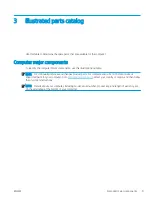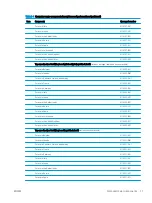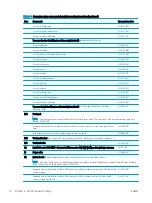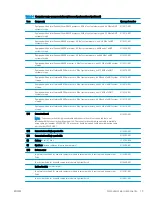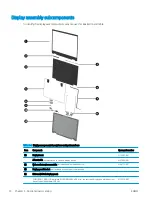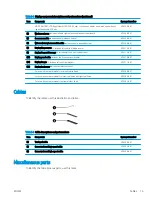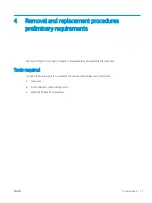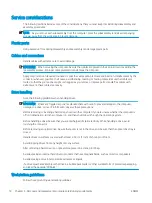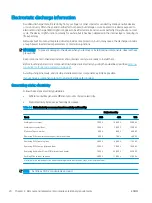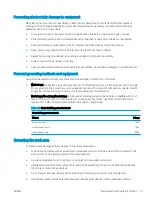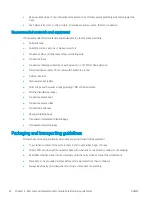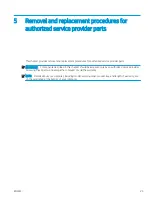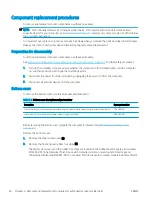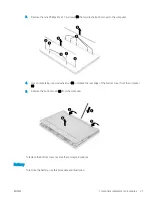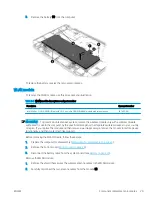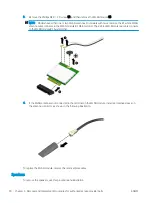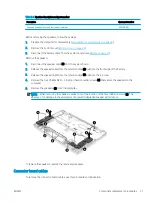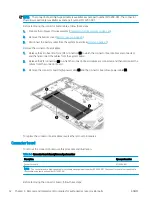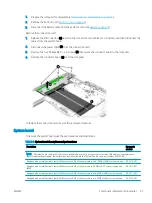
Electrostatic discharge information
A sudden discharge of static electricity from your finger or other conductor can destroy static-sensitive devices
or microcircuitry. Often the spark is neither felt nor heard, but damage occurs. An electronic device exposed to
electrostatic discharge (ESD) might not appear to be affected at all and can work perfectly throughout a normal
cycle. The device might function normally for a while, but it has been degraded in the internal layers, reducing its
life expectancy.
Networks built into many integrated circuits provide some protection, but in many cases, the discharge contains
enough power to alter device parameters or melt silicon junctions.
IMPORTANT:
To prevent damage to the device when you remove or install internal components, observe these
precautions:
Keep components in their electrostatic-safe containers until you are ready to install them.
Before touching an electronic component, discharge static electricity by using the guidelines described
grounding methods and equipment on page 21
Avoid touching pins, leads, and circuitry. Handle electronic components as little as possible.
If you remove a component, place it in an electrostatic-safe container.
Generating static electricity
Follow these static electricity guidelines.
●
Different activities generate different amounts of static electricity.
●
Static electricity increases as humidity decreases.
Table 4-1
Static electricity occurrence based on activity and humidity
Relative humidity
Event
55%
40%
10%
Walking across carpet
Walking across vinyl floor
Motions of bench worker
Removing DIPs (dual in-line packages) from plastic tube
7,500 V
3,000 V
400 V
400 V
15,000 V
5,000 V
800 V
700 V
35,000 V
12,000 V
6,000 V
2,000 V
Removing DIPs from vinyl tray
Removing DIPs from polystyrene foam
Removing bubble pack from PCB (printed circuit board)
Packing PCBs in foam-lined box
2,000 V
3,500 V
7,000 V
5,000 V
4,000 V
5,000 V
20,000 V
11,000 V
11,500 V
14,500 V
26,500 V
21,000 V
Multiple electric components can be packaged together in plastic tubes, trays, or polystyrene foam.
NOTE:
As little as 700 V can degrade a product.
20
Chapter 4 Removal and replacement procedures preliminary requirements
ENWW
Summary of Contents for Chromebook x360 14a
Page 4: ...iv Safety warning notice ENWW ...
Page 30: ...24 Chapter 4 Removal and replacement procedures preliminary requirements ENWW ...
Page 57: ...ENWW Erase and reformat the recovery media 51 ...
Page 58: ...52 Chapter 6 Backing up resetting and recovering ENWW ...
Page 62: ...56 Chapter 7 Specifications ENWW ...
Page 66: ...60 Chapter 8 Power cord set requirements ENWW ...
Page 68: ...62 Chapter 9 Recycling ENWW ...




